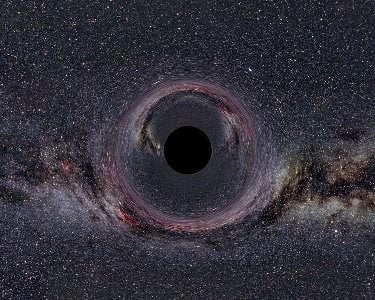[/caption] Those fearful folks who have worried about the Large Hadron Collider creating a black hole that could swallow the Earth have probably been feeling pretty safe while the giant particle accelerator is still offline. But hopefully they haven't read the latest
Physical Review Letters
. It includes a paper that explains how researchers at Dartmouth have figured out a way to create a tiny quantum-sized black hole in their lab, with no LHC required.
In their paper, the researchers show that a magnetic field-pulsed microwave transmission line containing an array of superconducting quantum interference devices, or SQUIDs, not only reproduces physics similar to that of a radiating black hole, but does so in a system where the high energy and quantum mechanical properties are well understood and can be directly controlled in the laboratory. The paper states, "Thus, in principle, this setup enables the exploration of analogue quantum gravitational effects."
"We can also manipulate the strength of the applied magnetic field so that the SQUID array can be used to probe black hole radiation beyond what was considered by Hawking," said Miles Blencowe, an author on the paper and a professor of physics and astronomy at Dartmouth.
Creating a black hole would allow researchers to better understand what physicist Stephen Hawking proposed more than 35 years ago: black holes are not totally void of activity; they emit photons, which is now known as Hawking radiation.
"Hawking famously showed that black holes radiate energy according to a thermal spectrum," said co-author Paul Nation. "His calculations relied on assumptions about the physics of ultra-high energies and quantum gravity. Because we can't yet take measurements from real black holes, we need a way to recreate this phenomenon in the lab in order to study it, to validate it."
This is not the first proposed imitation black hole, Nation said. Other proposed schemes to create a black hole include using supersonic fluid flows, ultracold bose-einstein condensates and nonlinear fiber optic cables. However, these ideas wouldn't work as well to study Hawking radiation because the radiation in these methods is incredibly weak or otherwise masked by commonplace radiation due to unavoidable heating of the device, making it very difficult to detect. "In addition to being able to study analogue quantum gravity effects, the new, SQUID-based proposal may be a more straightforward method to detect the Hawking radiation," said Blencowe.
Source:
Dartmouth U
 Universe Today
Universe Today
